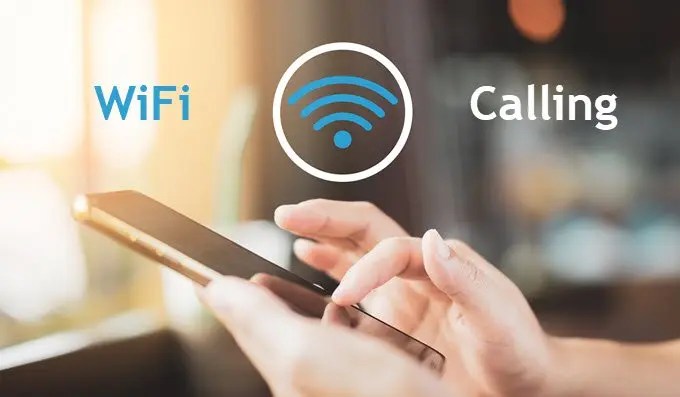Everything You Need To Know About WiFi Calling
In this article, we explain everything you need to know about WiFi calling. Click the link to read the full guide.
Author:Daniel BarrettMay 20, 202215.7K Shares1.3M Views

This article explains everything you need to know about WiFi calling.
Google finally announced Google Fi, which is formally known as Project Fi, will be expanding to iPhone, Samsung, and OnePlus phones. For a service that was once compatible with only a handful of Androidphones, this is a notable development for the company’s first Wi-Fi network.
As we all know, users spend time in a few places where their phones don’t work, whether it’s a room at home, a coffee shop, or some other signal-blocked location. You can find a way to communicate with friends and family on a signal-block location by calling WiFi instead of relying on a cellular network.
Wi-Fi calling on a phone is nothing new. The ability to patch a call using a Wi-Fi connection instead of a cellular one has been around for years, with Skype being one of the oldest and most popular apps to do so.
If you don’t have a cellular signal or it’s spotty, the ability to make WiFi calls comes in handy. But that isn’t the only reason you’ll want to use WiFi calling.
Also read:How to find a Wi-Fi password on Mac
What is WiFi calling?
Instead of using your carrier’s network connection, your phone can make a voice call via a Wi-Fi network. This is the same Wi-Fi connection you have set up at home or whatever Wi-Fi hotspot you happen to be on when you’re out and about, such as at a cafe or library. In most ways, it’s like any other phone call, and you still use regular phone numbers.
That means WiFi calling is perfect for overseas travelers because there’s typically no roaming or international charge for making calls or sending texts back home. And many carriers’ plans include free calling to Canada and Mexico.
Remember that you will be charged an international rate based on your international calling plan if you call an international line using your U.S.-based smartphone. And WiFi calling isn’t supported in some countries, including Australia, India, Cuba, Singapore, and China.
Why would I need WiFi calling?
Wi-Fi calling is beneficial when you’re in weak carrier coverage. For example, when traveling to the residential countryside, you’re in a building with spotty reception. You may already be familiar with using Wi-Fi to send messages when SMS texting is unavailable (iPhone users will be familiar with their native blue-colored texts from iMessage, and apps like Kik and Messenger also provide these services) same applies when you’re trying to place a call.
With Wi-Fi, you can call a friend up even if you’re in a dingy, underground bar (assuming you can connect to the bar’s Wi-Fi).
How much does WiFi calling cost?
WiFi calling doesn’t cost anything extra. Carriers treat your WiFi calls as though you were making a regular cellular call from the U.S. So whatever rates and fees apply to your regular cellular calls will also apply to your WiFi calls, including deducting call minutes from your monthly allotment if you don’t have an unlimited plan.
Does my carrier offer WiFi calling?
When Apple included Wi-Fi calling capabilities in its iPhone 6 in 2014, the four major carriers in the US ramped up their support. These days, you can find several phones on T-Mobile, Sprint, Verizon, and AT&T, that have built-in Wi-Fi calling capabilities.
T-Mobile (and Sprint):All new T-Mobile smartphonesand newer T-Mobile and Sprint smartphones support Wi-Fi calling. To find out if your existing model supports it, go to Settings on your device and search for WiFi Calling.
Verizon Wireless:All recent-model smartphones support Wi-Fi calling. To turn on Wifi calling, follow the directions on Verizon’s Wi-Fi Calling FAQs page.
AT&T:All recent-model smartphones support Wi-Fi calling. To find out if your phone supports WiFi calling, go to Device Support, find and select your device, select “View All Tutorials,” selection “Calling,” and then “Wi-Fi Calling” to view the instructions. If WiFi Calling isn’t listed, your phone isn’t compatible.
Note: If your device doesn’t support WiFi calling, you may be able to find some workarounds. Some apps like Skype, FaceTime, and Messenger allow you to make voice and video calls over Wi-Fi and send text messages.
Do I need a fast Wi-Fi connection?
The higher your throughput, the better your connection will be. A minimum of 1Mbps should be enough to patch a solid call through. Republic Wireless reports that it can hold a call with 80Kbps, but the quality may decrease, and you’ll also experience more dropped calls. Keep in mind that the number of people currently using a Wi-Fi network and what they’re doing (20 people each streaming a 4K video, for example) may also affect your signal strength.
Does Wi-Fi calling drain or save your battery?
In poor cellular coverage areas where you have a decent Wi-Fi signal, Wi-Fi calling will help save battery life. In cases where you have low or no cellular signal, you may want to consider turning off cellular to preserve your battery. However, if you are not connected to a WiFi network, leaving on WiFi can drain your battery.
Editor’s recommendations:

Daniel Barrett
Author
Daniel Barrett is a tech writer focusing on IoT, gadgets, software, and cryptocurrencies. With a keen interest in emerging technologies, Daniel offers expert analysis and commentary on industry trends. Follow him for authoritative insights into the latest tech innovations.
Latest Articles
Popular Articles